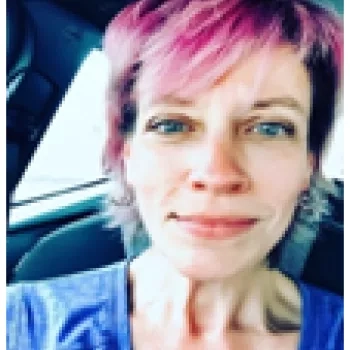
Mohs Surgery


In the early 1930s, Dr. Frederic E. Mohs developed a Chemosurgery procedure to treat certain cutaneous cancers. This procedure utilized frozen tissue and did not require a patient's surgical excision to go to a laboratory for processing.1 This surgery used a three-step approach to evaluate skin cancer surgical margins using a zinc chloride paste to chemically fix the area to be examined. The frozen excised tissue was embedded "en face," sectioned, and microscopically examined following the fixation process.2 (A crucial step of Mohs surgery is the embedding technique. Standard biopsy embedding is vertical/bread-loafed, while Mohs surgery uses the entire surgical margin in a single plane (en face). Mohs surgery is the gold standard for treating skin cancer.
In the mid-1960s, while studying with Dr. Mohs, Dr. Perry Robins realized the surgery had great potential in dermatology. Dr. Robins was instrumental in developing a fellowship training program and promoting Mohs surgery worldwide.3
This series will present relevant topics to today's laboratories practicing Mohs surgeries. Areas discussed will describe steps for practicing surgeries, provide thoughts on setting up a new laboratory and offer tips for completing a Mohs laboratory inspection.
Introduction to Mohs Surgery
Skin cancer is the most common cancer worldwide.4 Basal cell carcinoma and squamous cell carcinoma are the most prevalent skin cancers, and 80% of these cancers occur on the head and neck.5 Mohs surgery can treat these and treat dermatofibrosarcoma protuberans (DFSP), extramammary Paget's disease, Merkel cell carcinoma, and early melanomas.6
Mohs surgery is performed under a local anesthetic and near a laboratory by a specially trained surgeon – usually a dermatologist who has completed extensive surgical training in dermatopathology and reconstructive surgery. Mohs surgery is a staged procedure in which the Mohs surgeon removes a layer of the visible cancerous area, inks and maps the specimen, and microscopically assesses the sample while the patient waits. If cancer cells remain, the surgeon continues to remove layers from the affected areas until no further cancer cells exist. The surgeon can selectively remove only the areas where cancer remains, sparing unaffected tissue by inking and mapping.
The benefits of Mohs surgery include:
- Completed under local anesthesia, usually in an outpatient setting
- Precise results - 100% of the tissue margins examined
- Excellent rate of cure
- Sparing of healthy tissue with little scarring
- Cost-effective
- Usually completed in one procedure
발표자 소개

Linda has been with Henry Ford Health System for 22 years, all of which have been in the Mohs Surgery Laboratory, where she is currently a Lead Technologist. She has been active in the Michigan Society of Histotechnology for quite a few years, has been a member of NSH, and now belongs to ASMH.

Jennifer Healy has over 25 years of experience in histology, with a strong focus on Mohs Frozen Sectioning. She earned her degree in Biology and worked with cell cultures and retroviral research before transitioning to histology. She has worked with many Mohs surgeons in various settings from cancer centers and hospitals to private practice. Additionally, Jennifer has designed several Mohs labs for cancer centers and private practice Mohs surgeons.
참조 문헌
- Mohs: The gold standard. (2019, June 7). Skincancer.Org. https://www.skincancer.org/treatment-resources/mohs-surgery/mohs-the-gold-standard/
- Mohs FE. Chemosurgery for Facial Neoplasms. Arch Otolaryngol. 1972;95(1):62–67. doi:10.1001/archotol.1972.00770080110012
- Mohs Surgery - The Skin Cancer Foundation. The Skin Cancer Foundation. Published 2019. https://www.skincancer.org/treatment-resources/mohs-surgery/
- Skin Cancer Foundation. Skin Cancer Facts & Statistics - The Skin Cancer Foundation. The Skin Cancer Foundation. Published April 2020. https://www.skincancer.org/skin-cancer-information/skin-cancer-facts/
- Mohs Surgery for the Newly Diagnosed: What You Need to Know. The Skin Cancer Foundation. Published February 28, 2020. Accessed August 17, 2021. https://www.skincancer.org/blog/mohs-surgery-for-the-newly-diagnosed-what-you-need-to-know/
- What is Mohs surgery? www.aad.org. Accessed August 17, 2021. https://www.aad.org/public/diseases/skin-cancer/types/common/melanoma/mohs-surgery
Related Content
라이카 바이오시스템즈 Knowledge Pathway 콘텐츠는 에서 이용할 수 있는 라이카 바이오시스템즈 웹사이트 이용 약관의 적용을 받습니다. 법적고지. 라이카 바이오시스템즈 웨비나, 교육 프레젠테이션 및 관련 자료는 특별 주제 관련 일반 정보를 제공하지만 의료, 규정 또는 법률 상담으로 제공되지 않으며 해석되어서는 안 됩니다. 관점과 의견은 발표자/저자의 개인 관점과 의견이며 라이카 바이오시스템즈, 그 직원 또는 대행사의 관점이나 의견을 나타내거나 반영하지 않습니다. 제3자 자원 또는 콘텐츠에 대한 액세스를 제공하는 콘텐츠에 포함된 모든 링크는 오직 편의를 위해 제공됩니다.
모든 제품 사용에 다양한 제품 및 장치의 제품 정보 가이드, 부속 문서 및 작동 설명서를 참조해야 합니다.
Copyright © 2024 Leica Biosystems division of Leica Microsystems, Inc. and its Leica Biosystems affiliates. All rights reserved. LEICA and the Leica Logo are registered trademarks of Leica Microsystems IR GmbH.


